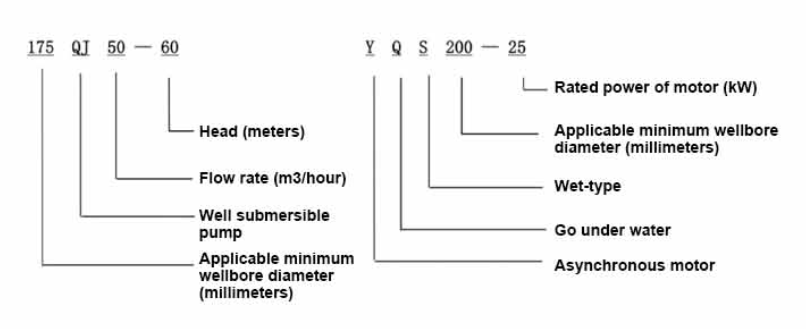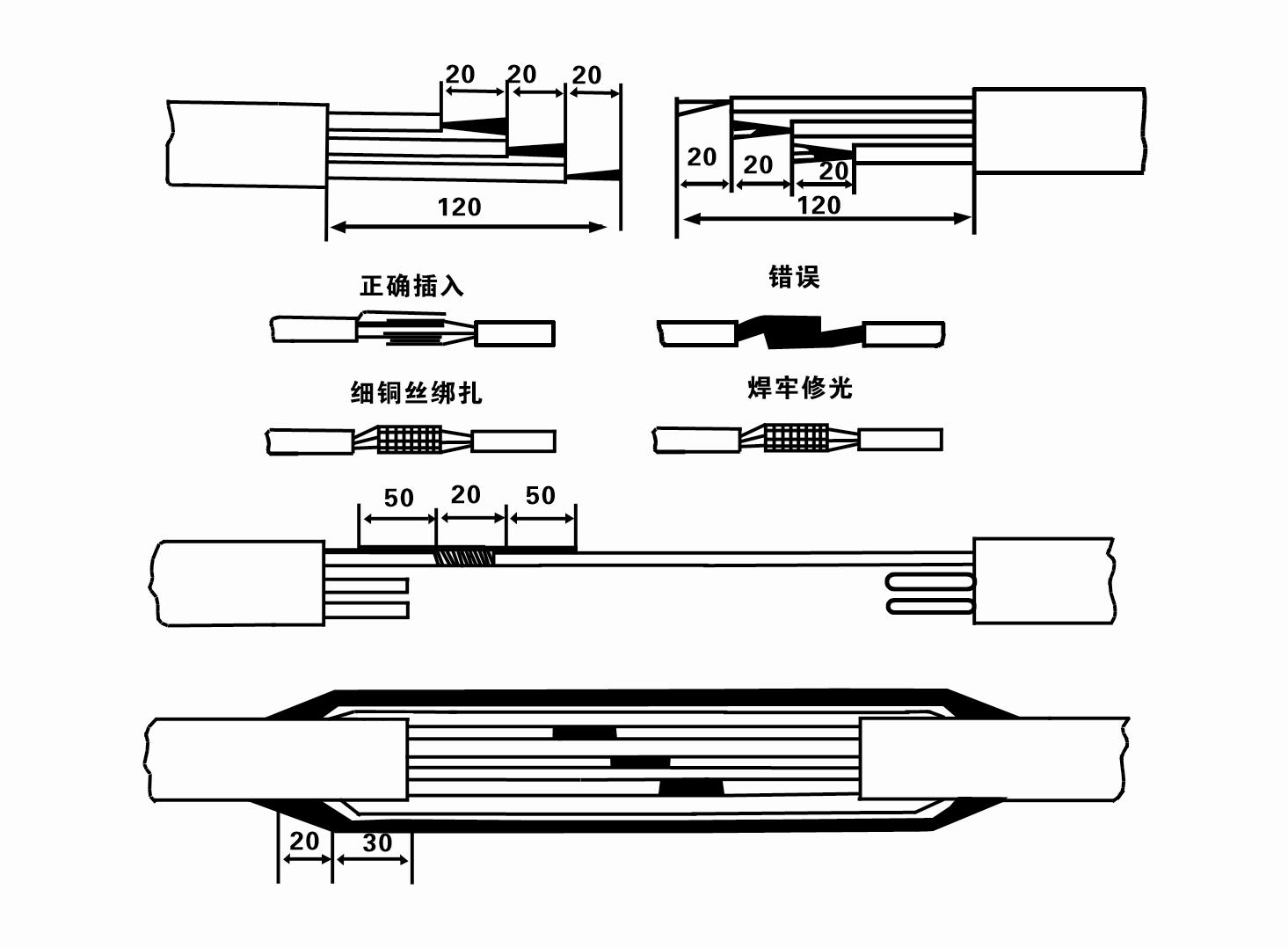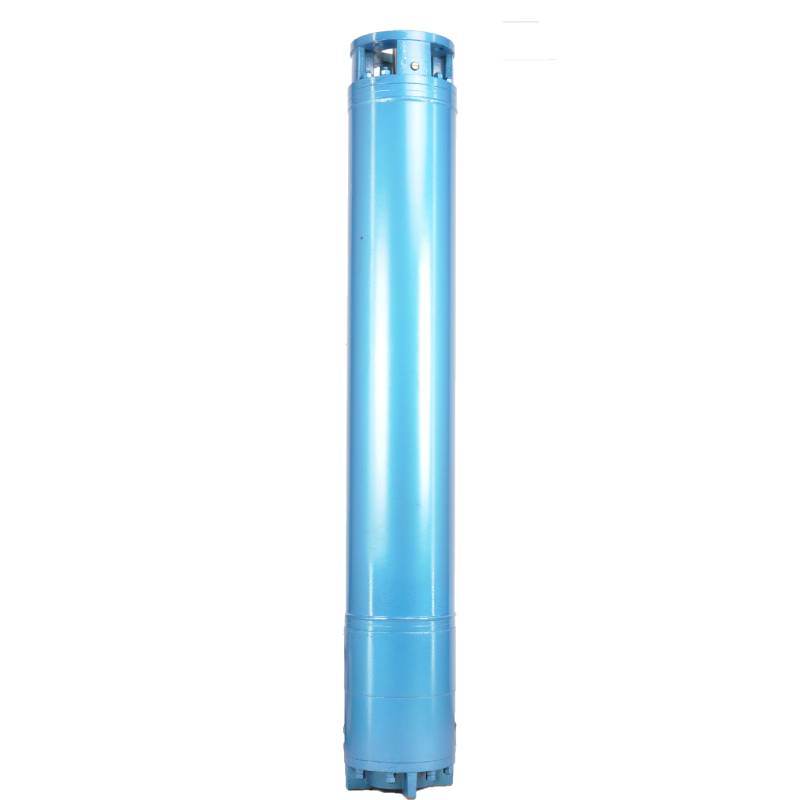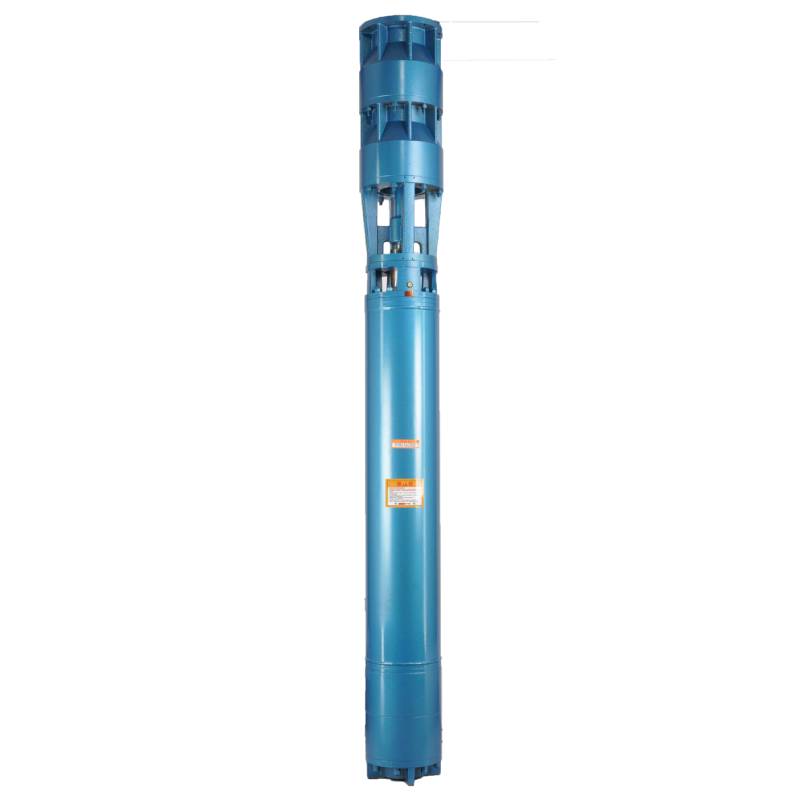This hot water pump adopts the motor made of 50W400 grade high quality cold rolled silicon steel, which is stamped by high speed punch press. It has the advantages of low stator iron loss and low self-heating. The motor winding is designed for hot water pump, high temperature resistance and anti-aging. The winding has water resistance, and adopts 3CR13 stainless steel blade shaft, high temperature resistant bushing and other high quality accessories to enable it to operate for a long time at high temperature, and can be used with frequency converter, so as to automatically adjust according to the amount of water used. This hot water pump is the ideal choice for your hot water equipment, which can operate stably and efficiently, providing you with a lasting hot water supply.
The product is a three-phase AC 380V (tolerance + / - 5%), 50HZ (tolerance + / - 1%) power supply submersible pump. With water quality requirements: water temperature is not higher than 20 °C; solid impurities content (mass ratio) is not more than 0.01%; PH value (pH) is 6.5-8.5; hydrogen sulfide content is not more than 1.5mg/L; chloride ion content is not more than 400mg/L. The electric pump adopts closed or water sealed wet structure, before use must be submersible motor inner cavity filled with clean water to prevent empty, and then tighten the water and air bolts, otherwise not to use. Its work should be completely immersed in water, immersion depth is not more than 70 meters, the distance between the bottom of the pump and the bottom of the well is not less than 3 meters. Well water inflow quantity should be able to meet the electric pump water output and continuous operation, the output water quantity should be controlled at 0.7-1.2 times of the rated flow. The well should be vertical, the electric pump can not be used horizontally or inclined, only vertically placed. The electric pump must be equipped with cables and external overload protection device as required. It is strictly prohibited to conduct no-load test under no water condition.

| Model | Llif (m3/h) | Pen (m) |
Cyflymder cylchdroi (newid/pwynt) |
Pwmp dŵr(%) | Allfa diamedr (mm) |
Yn berthnasol yn dda diamedr (mm) |
Wedi'i raddio power(KW) |
Wedi'i raddio foltedd(V) |
Wedi'i raddio cerrynt (A) |
Effeithlonrwydd modur (%) | power factorcosφ | Uned Maint mwyaf rheiddiol (mm) |
Sylw | |||||||||
| 300QJ200-40 | 200 | 40 | 2900 | 76 | 150 | 300uchod | 37 | 380 | 77.8 | 85.0 | 0.85 | 281 | ||||||||||
| 300QJ200-60 | 60 | 55 | 115 | 85.5 | 0.85 | |||||||||||||||||
| 300QJ200-80 | 80 | 75 | 154.1 | 86.0 | 0.86 | |||||||||||||||||
| 300QJ200-100 | 100 | 90 | 183.8 | 86.5 | 0.86 | |||||||||||||||||
| 300QJ200-120 | 120 | 100 | 204.3 | 86.5 | 0.86 | |||||||||||||||||
| 300QJ200-140 | 140 | 125 | 249.5 | 87.5 | 0.87 | |||||||||||||||||
| 300QJ200-160 | 160 | 140 | 277.8 | 88.0 | 0.87 | |||||||||||||||||
| 300QJ200-180 | 180 | 160 | 317.5 | 88.0 | 0.87 | |||||||||||||||||
| 300QJ200-200 | 200 | 185 | 367.2 | 88.0 | 0.87 | |||||||||||||||||
| 300QJ200-240 | 240 | 220 | 436.6 | 88.0 | 0.87 | |||||||||||||||||
| 300QJ320-30 | 320 | 30 | 2900 | 77 | 200 | 300uchod | 45 | 380 | 94.6 | 85.0 | 0.85 | 281 | ||||||||||
| 300QJ320-60 | 60 | 90 | 183.8 | 86.5 | 0.86 | |||||||||||||||||
| 300QJ320-90 | 90 | 125 | 249.5 | 87.5 | 0.87 | |||||||||||||||||
| 300QJ320-120 | 120 | 160 | 317.5 | 88.0 | 0.87 | |||||||||||||||||
1, well submersible pump for clean water pump, prohibit the new well, pumping sediment and muddy water,
2, well water pump voltage grade of 380/50HZ, the use of other voltage grades of submersible motors need to be customized. The underground cable must use waterproof cable, must be equipped with starting equipment, such as distribution box, start not ready should have commonly used motor comprehensive protection function, such as short circuit overload protection, phase protection, undervoltage protection, grounding protection, idling protection, in case of abnormal conditions, the protection device should be timely action trip.
3, the installation and use of the pump must be reliably grounded, prohibit the push and pull switch when the hands and feet are wet, the installation and maintenance of the pump must be cut off the power supply, the use of the pump place to set up "to prevent electric shock" obvious signs:
4, down the well or before installation, the motor cavity must be filled with distilled water or non-corrosive clean cold boiling water, tighten the / water bolt, the pump on the ground test run, must be to the pump chamber water lubrication rubber bearings, instant start not more than a second, see whether the steering is the same as the steering instructions. When the pump is upright, pay attention to safety, prevent overturning injury.
5, yn llym yn unol â darpariaethau'r lifft pwmp, ystod llif y defnydd, i atal llif isel neu rym pwmpio lifft uchel, y dwyn byrdwn a rhannau eraill o'r gwisgo, y gorlwytho modur llosgi
6, ar ôl y pwmp i lawr y ffynnon, ni ddylai mesuriad y modur i'r gwrthiant inswleiddio daear fod yn llai na 100M, ar ôl dechrau arsylwi ar y foltedd a'r presennol, edrychwch ar yr inswleiddiad dirwyn i ben y modur, boed yn unol â'r gofynion; tymheredd lleoliad storio pwmp os yw'n llai na phwynt rhewi, dylai fod yn sych y dŵr yn y ceudod modur, atal y difrod iâ dŵr ceudod modur a achosir gan dymheredd isel.
The pump part is mainly composed of pump shaft, impeller, shunt shell, rubber bearing, check valve body (optional) and other components. The motor part is mainly composed of base, pressure regulating diaphragm, thrust bearing, thrust plate, lower guide bearing seat, stator, rotor, upper guide bearing seat, sand discharging ring, water inlet section, lead cable and other components. The main characteristic of this product is that the motor is a water-cooled submersible three-phase asynchronous motor, and the motor cavity is filled with water to cool the motor and lubricate the bearing. The pressure regulating diaphragm at the bottom is used to adjust the expansion-contraction pressure difference in the body caused by the change of the temperature rise of the motor. In order to prevent the sand particles in the well water from entering the motor, two oil seals are installed at the upper end of the motor shaft extension, and a sand discharging ring is installed to form a sand discharging structure. In order to prevent the pump shaft from jumping when starting, the pump shaft and the motor shaft are connected together through a coupling, and a thrust bearing is installed at the bottom of the motor. The lubrication of the motor and the pump bearing is realized through water lubrication. The stator winding of the motor is made of high-quality well motor winding wire, with high insulation performance. The pump is designed by computer CAD, with simple structure and good technical performance.

(1) Paratoi cyn gosod:
1. Gwiriwch a yw'r pwmp tanddwr yn bodloni'r amodau defnydd a'r cwmpas a nodir yn y llawlyfr.
2. Gan ddefnyddio gwrthrych trwm gyda diamedr sy'n hafal i diamedr allanol uchaf y pwmp tanddwr, mesurwch a all diamedr mewnol y ffynnon ffitio'r pwmp tanddwr, a mesur a yw dyfnder y ffynnon yn bodloni'r gofynion gosod.
3. Gwiriwch a yw tyllu'r ffynnon yn lân ac a yw dŵr y ffynnon yn gymylog. Peidiwch byth â defnyddio pwmp trydan tanddwr i olchi mwd y pwmp welor a dŵr tywod er mwyn osgoi niwed cynamserol i'r pwmp trydan tanddwr.
4. Gwiriwch a yw lleoliad y clamp gosod welhead yn addas ac a all wrthsefyll ansawdd yr uned gyfan
5. Gwiriwch a yw'r cydrannau pwmp tanddwr wedi'u cwblhau a'u gosod yn iawn yn ôl y diagram cydosod yn y llawlyfr Tynnwch y sgrin hidlo a chylchdroi'r cyplydd i weld a yw'n cylchdroi yn hyblyg
6. Dadsgriwiwch y sgriw dŵr a llenwi'r ceudod modur â dŵr glân nad yw'n cyrydol (noder. gwnewch yn siŵr ei ffiltro), yna tynhau'r sgriw dŵr. Ar ôl 12 awr o chwistrelliad dŵr, ni ddylai ymwrthedd inswleiddio'r modur fod yn llai na 150M Q wrth ei fesur gyda bwrdd ysgwyd 500V.
7. Cable joint, cut off a 120mm rubber sleeve from one end of the outgoing cable and the matching cable with an electrician's knifethen stagger the length of the three core wires in a stepped shape, peel off a 20mm copper core, scrape of the oxide layer on theoutside of the copper wire with a knife or sand cloth, and insert the two connected wire ends in palirs.After tying the layer tightly with fine copper wire, solder it thoroughly and firmly, and sand of any. burrs on the surface. Then, forthe three joints, use polyvester insulation tape to wrap them in a semi stacked manner for three lavers. Wrap the two ends of thewrapping layer tightywith nyion thread,and then use a semi stacked method to wrap the tape for three layers. Wrap the outellayer with high-pressure insulation tape for three layers. Finally, fold the threestrands together and repeatedly wrap them for fivelayers with high-pressure tape. Each layer must be tightly tied, and the interlayer joints must be tight and fimm to prevent water frompenetrating and damaging the insulation, After wrapping, soak in water at room temperature of 20 ’c for 12 hours, and measurethe insulation resistance with a shaking table, which should not be less than 100M Ω
Mae'r diagram proses gwifrau cebl ynghlwm fel a ganlyn:
8. Defnyddiwch amlfesurydd i wirio a yw'r gwifrau tri cham wedi'u cysylltu ac a yw'r gwrthiant DC yn gyfartal yn fras.
9. Gwiriwch a yw'r cylched a chynhwysedd y trawsnewidydd yn cael eu gorlwytho, ac yna cysylltu'r switsh amddiffyn gorlwytho neu'r offer cychwyn. Gweler Tabl 2 am fodelau penodol, ac yna Arllwyswch bwced o ddŵr i'r pwmp dŵr o'r allfa pwmp dŵr i iro'r Bearings rwber yn y pwmp, ac yna gosodwch y pwmp trydan tanddwr yn unionsyth ac yn gyson.Start (dim mwy nag un eiliad) a gwirio a yw'r cyfeiriad llywio yn gyson â'r arwydd llywio. Os na, cyfnewidiwch unrhyw ddau gysylltydd o'r cebl tri cham. Yna gosodwch yr hidlydd a pharatowch i fynd i lawr y ffynnon. Os caiff ei ddefnyddio mewn achlysuron arbennig (fel ffosydd, ffosydd, afonydd, pyllau, pyllau, ac ati), rhaid i'r pwmp trydan gael ei seilio'n ddibynadwy.
(2) Offer ac offer gosod:
1. Un pâr o gadwyni codi am fwy na dwy dunnell.
2. Trybedd gydag uchder fertigol o ddim llai na phedwar metr.
3. Dau raff hongian (rhaffau gwifren) sy'n gallu dwyn pwysau o fwy nag un tunnell (gall ddwyn pwysau set gyflawn o bympiau dŵr).
4. Gosod dau bâr o clampiau (splints).
5. Wrenches, morthwylion, sgriwdreifers, offer trydanol ac offerynnau, ac ati.
(3) Gosod pwmp trydan:
1. Dangosir diagram gosod y pwmp trydan tanddwr yn Ffigur 2. Dangosir y dimensiynau gosod penodol yn Nhabl 3 "Rhestr o Dimensiynau Gosod y Pwmp Trydan Tanddwr".
2. Gellir codi pympiau trydan tanddwr â phen llai na 30 metr yn uniongyrchol i'r ffynnon gan ddefnyddio pibellau a rhaffau gwifren neu rhaffau cywarch eraill a all ddwyn pwysau llawn y peiriant cyfan, pibellau dŵr, a dŵr yn y pibellau.
3. Mae pympiau â phen o fwy na 30 metr yn defnyddio pibellau dur, ac mae'r dilyniant gosod fel a ganlyn:
①Defnyddiwch clamp i glampio pen uchaf rhan y pwmp dŵr (mae'r modur a'r pwmp dŵr wedi'u cysylltu ar hyn o bryd), codwch ef â chadwyn hongian, a'i glymu'n araf i mewn i'r ffynnon nes i chi roi'r clamp ar ben y ffynnon a thynnu'r cadwyn hongian.
② Defnyddiwch bâr arall o clampiau i glampio pibell, ei godi â chadwyn hongian 15 cm i ffwrdd o'r fflans, a'i ostwng yn araf. Rhwng fflans pibell a fflans pwmp Rhowch y pad rwber yn ei le a thynhau'r bibell a'r pwmp yn gyfartal â bolltau, cnau a wasieri gwanwyn.
③ Codwch y pwmp tanddwr ychydig, tynnwch y clamp ar ben uchaf y pwmp dŵr, clymwch y cebl yn gadarn i'r bibell ddŵr gyda thâp plastig, a'i glymu'n araf nes bod y clamp wedi'i osod ar ben y ffynnon.
④ Defnyddiwch yr un dull i glymu'r holl bibellau dŵr i'r ffynnon.
⑤ Ar ôl i'r cebl plwm-allan gael ei gysylltu â'r switsh rheoli, mae'n gysylltiedig â'r cyflenwad pŵer tri cham.
(4) Pethau i'w nodi yn ystod y gosodiad:
1. Os canfyddir ffenomen jamio yn ystod y broses bwmpio, trowch neu tynnwch y bibell ddŵr i oresgyn y pwynt jamio. Os nad yw mesurau amrywiol yn gweithio o hyd, peidiwch â gorfodi'r pwmp i lawr er mwyn osgoi difrod i'r pwmp trydan tanddwr a'r ffynnon.
2. Yn ystod y gosodiad, dylid gosod pad rwber ar fflans pob pibell a'i dynhau'n gyfartal.
3. Pan fydd y pwmp dŵr yn cael ei ostwng i'r ffynnon, dylid ei osod yng nghanol pibell y ffynnon i atal y pwmp rhag rhedeg yn erbyn wal y ffynnon am amser hir, gan achosi'r pwmp i ddirgrynu a'r modur i ysgubo a llosgi .
4. Darganfyddwch ddyfnder y pwmp dŵr i waelod y ffynnon yn ôl amodau tywod a silt y ffynnon sy'n llifo. Peidiwch â chladdu'r pwmp yn y mwd. Yn gyffredinol, nid yw'r pellter o'r pwmp dŵr i waelod y ffynnon yn llai na 3 metr (gweler Ffigur 2).
5. Ni ddylai dyfnder mynediad dŵr y pwmp dŵr fod yn llai na 1-1.5 metr o lefel y dŵr deinamig i'r nod mewnfa dŵr (gweler Ffigur 2). Fel arall, gall y Bearings pwmp dŵr gael eu niweidio'n hawdd.
6. Ni all lifft y pwmp dŵr fod yn rhy isel. Fel arall, mae angen gosod falf giât ar bibell ddŵr y ffynnon i reoli llif y pwmp ar y pwynt llif graddedig i atal y modur rhag cael ei orlwytho a'i losgi oherwydd cyfraddau llif mawr.
7. Pan fydd y pwmp dŵr yn rhedeg, dylai'r allbwn dŵr fod yn barhaus a hyd yn oed, dylai'r presennol fod yn sefydlog (o dan amodau gwaith graddedig, yn gyffredinol dim mwy na 10% o'r cerrynt graddedig), ac ni ddylai fod unrhyw ddirgryniad na sŵn. Os oes unrhyw annormaledd, dylid stopio'r peiriant i ddarganfod yr achos a'i ddileu.
8. Wrth osod, rhowch sylw i osodiad y wifren sylfaen modur (gweler Ffigur 2). Pan fydd y bibell ddŵr yn bibell ddur, ei harwain o'r clamp pen ffynnon; pan fydd y bibell ddŵr yn bibell blastig, ei arwain o farc sylfaen y pwmp trydan.
After installation of the underwater pump, it is necessary to recheck the insulation resistance and three-phase continuity of the switch, and check whether the connection between the instrument and the starting equipment is wrong. If there is no problem, you can start the test machine. After starting, observe whether the indication reading of each instrument is correct. If the rated voltage and current specified on the nameplate are exceeded, observe whether the pump has any noise or vibration. If everything is normal, it can be put into operation. Four hours after the first operation of the pump, it should be turned off and the thermal insulation resistance of the motor should be quickly tested, and its value should not be less than 0.5 megaohm. After stopping the pump, it should be restarted after an interval of five minutes to prevent the water column in the pipeline from completely reversing, resulting in the motor burning due to excessive current. After the pump is put into normal operation, in order to prolong its service life, it is necessary to check regularly whether the supply voltage, working current and insulation resistance are normal. If the following conditions are found, the machine should be stopped immediately to eliminate the fault:
1 the current exceeds 20% under the rated working condition.
2 the dynamic water level drops to the inlet section, resulting in intermittent drainage.
3 the underwater pump vibrates violently or emits huge noise.
4 the supply voltage is lower than 340 volts.
5 a fuse is burned.
6 the water pipe is damaged.
7 the thermal insulation resistance of the motor to the ground is less than 0.5 megaohm.
When disassembling the device, it is necessary to untie the cable bundle and remove the pipeline part and the line protection plate. Remove the drain bolt and exclude all water in the motor chamber. Remove the filter element and loosen the screw on the coupling fixed to the motor shaft. Unscrew the bolt connecting the water inlet section and the motor, and separate the pump and the motor (pay attention to placing the device horizontally when separating to prevent the bending of the pump shaft). The sequence of disassembling the pump is as follows: (see Figure 1) water inlet section, impeller, water inlet shell, impeller. Check the valve body, and use a special tool to loosen the cone sleeve fixed to the impeller when removing the impeller. In the process of disassembly, avoid bending the pump shaft and damaging various components. The disassembly process of the motor is as follows: (see Figure 1) put the motor on the platform, and remove the nuts on the screw (pull rod bolt), base, shaft head lock nut, thrust plate, key and lower guide rail - bearing seat, bolt, and then remove the rotor (be careful not to damage the wiring harness), and finally remove the connecting parts and upper guide bearing seat. Unit assembly: before assembly, the rust and dirt of each component should be cleaned, and the sealant should be coated on each mating surface and fastener, and then assembled in the opposite order of disassembly (the movement of the motor shaft after assembly is about one millimeter), after the assembly is completed, the coupling should be flexibly rotated, and then the filter element should be placed for testing. Each time the underwater electric pump has been used for one year, or less than one year but has been immersed for two years, it must be disassembled and inspected in accordance with Article 5 and replace the worn parts.
1, rhowch y dŵr allan yn y ceudod modur (yn enwedig yn y gaeaf i atal y modur rhag rhewi), a chlymwch y cebl yn dda.
2, store in an indoor room without corrosive substances and gases, with a temperature below 40 °C.
3, dylai defnydd hirdymor roi sylw i atal rhwd pympiau tanddwr.
- Impeller
- Llawes siafft
- Llawes siafft rwber
-
Modrwy selio
01 Cymeriant dŵr ffynnon dwfn
02 Cyflenwad dŵr uchel
03 cyflenwad dŵr mynydd
04 twr dwr
05 Dyfrhau amaethyddol
06 dyfrhau gardd
07 cymeriant dŵr afon
08 dŵr domestig










